Zimu Lu
MathCoder2: Better Math Reasoning from Continued Pretraining on Model-translated Mathematical Code
Oct 10, 2024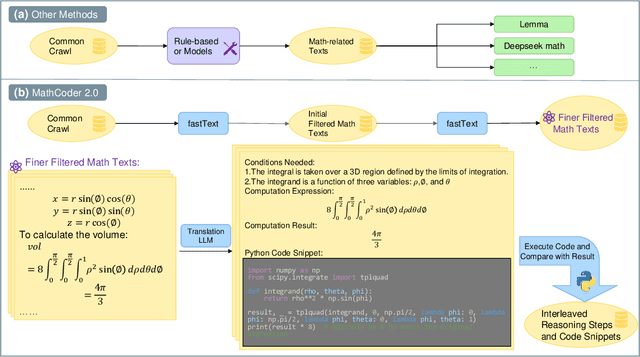

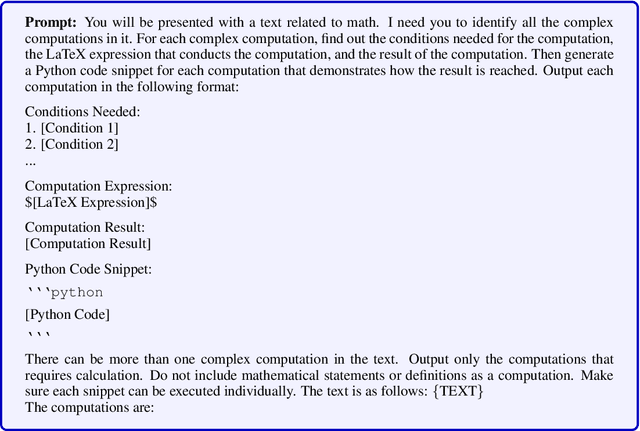
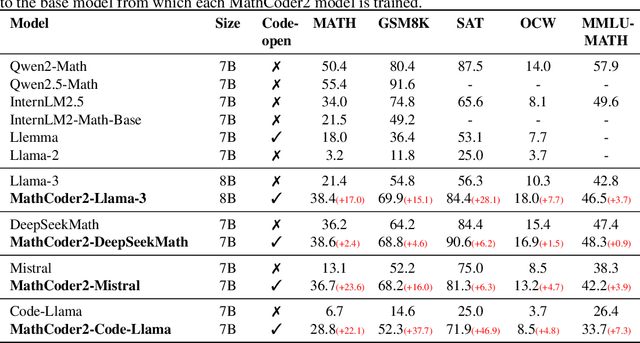
Abstract:Code has been shown to be effective in enhancing the mathematical reasoning abilities of large language models due to its precision and accuracy. Previous works involving continued mathematical pretraining often include code that utilizes math-related packages, which are primarily designed for fields such as engineering, machine learning, signal processing, or module testing, rather than being directly focused on mathematical reasoning. In this paper, we introduce a novel method for generating mathematical code accompanied with corresponding reasoning steps for continued pretraining. Our approach begins with the construction of a high-quality mathematical continued pretraining dataset by incorporating math-related web data, code using mathematical packages, math textbooks, and synthetic data. Next, we construct reasoning steps by extracting LaTeX expressions, the conditions needed for the expressions, and the results of the expressions from the previously collected dataset. Based on this extracted information, we generate corresponding code to accurately capture the mathematical reasoning process. Appending the generated code to each reasoning step results in data consisting of paired natural language reasoning steps and their corresponding code. Combining this data with the original dataset results in a 19.2B-token high-performing mathematical pretraining corpus, which we name MathCode-Pile. Training several popular base models with this corpus significantly improves their mathematical abilities, leading to the creation of the MathCoder2 family of models. All of our data processing and training code is open-sourced, ensuring full transparency and easy reproducibility of the entire data collection and training pipeline. The code is released at https://github.com/mathllm/MathCoder2 .
Step-Controlled DPO: Leveraging Stepwise Error for Enhanced Mathematical Reasoning
Jul 02, 2024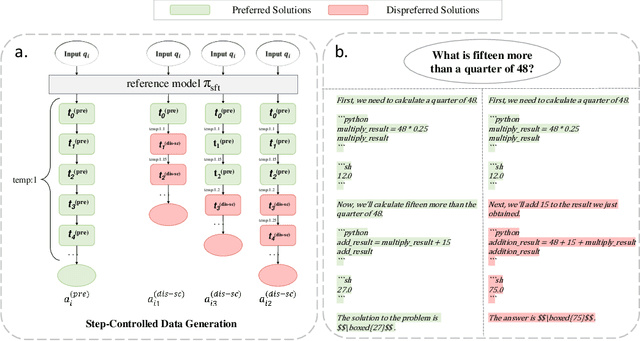
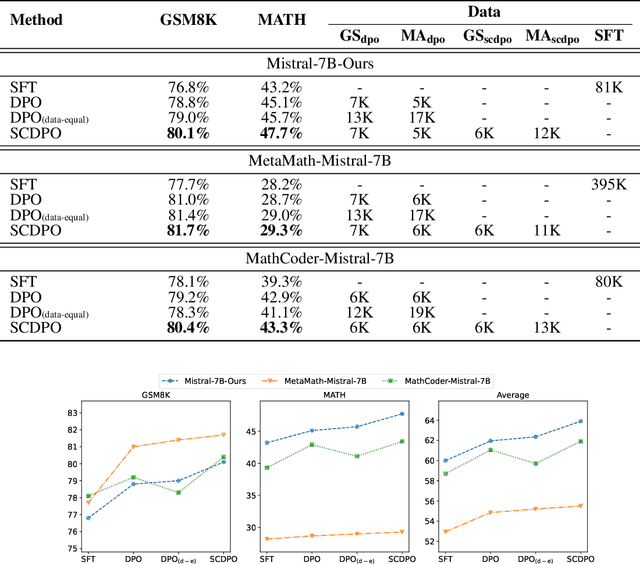

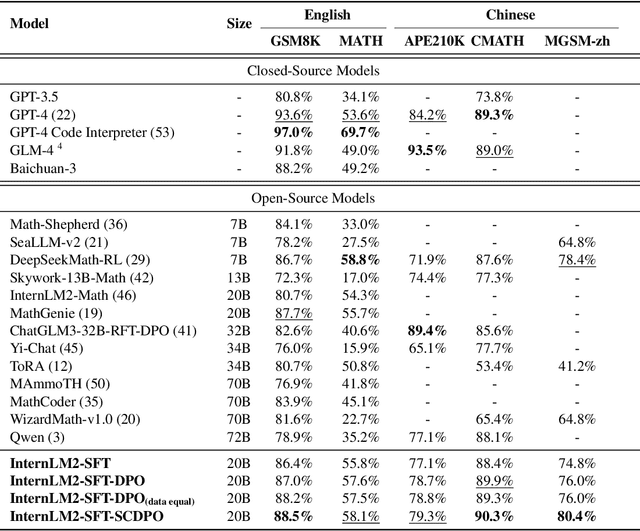
Abstract:Direct Preference Optimization (DPO) has proven effective at improving the performance of large language models (LLMs) on downstream tasks such as reasoning and alignment. In this work, we propose Step-Controlled DPO (SCDPO), a method for automatically providing stepwise error supervision by creating negative samples of mathematical reasoning rationales that start making errors at a specified step. By applying these samples in DPO training, SCDPO can better align the model to understand reasoning errors and output accurate reasoning steps. We apply SCDPO to both code-integrated and chain-of-thought solutions, empirically showing that it consistently improves the performance compared to naive DPO on three different SFT models, including one existing SFT model and two models we finetuned. Qualitative analysis of the credit assignment of SCDPO and DPO demonstrates the effectiveness of SCDPO at identifying errors in mathematical solutions. We then apply SCDPO to an InternLM2-20B model, resulting in a 20B model that achieves high scores of 88.5% on GSM8K and 58.1% on MATH, rivaling all other open-source LLMs, showing the great potential of our method.
MathGenie: Generating Synthetic Data with Question Back-translation for Enhancing Mathematical Reasoning of LLMs
Feb 26, 2024Abstract:Large language models (LLMs) have exhibited great potential in mathematical reasoning. However, there remains a performance gap in this area between existing open-source models and closed-source models such as GPT-4. In this paper, we introduce MathGenie, a novel method for generating diverse and reliable math problems from a small-scale problem-solution dataset (denoted as seed data). We augment the ground-truth solutions of our seed data and train a back-translation model to translate the augmented solutions back into new questions. Subsequently, we generate code-integrated solutions for the new questions. To ensure the correctness of the code-integrated solutions, we employ rationale-based strategy for solution verification. Various pretrained models, ranging from 7B to 70B, are trained on the newly curated data to test the effectiveness of the proposed augmentation technique, resulting in a family of models known as MathGenieLM. These models consistently outperform previous open-source models across five representative mathematical reasoning datasets, achieving state-of-the-art performance. In particular, MathGenieLM-InternLM2 achieves an accuracy of 87.7% on GSM8K and 55.7% on MATH, securing the best overall score among open-source language models.
Measuring Multimodal Mathematical Reasoning with MATH-Vision Dataset
Feb 22, 2024



Abstract:Recent advancements in Large Multimodal Models (LMMs) have shown promising results in mathematical reasoning within visual contexts, with models approaching human-level performance on existing benchmarks such as MathVista. However, we observe significant limitations in the diversity of questions and breadth of subjects covered by these benchmarks. To address this issue, we present the MATH-Vision (MATH-V) dataset, a meticulously curated collection of 3,040 high-quality mathematical problems with visual contexts sourced from real math competitions. Spanning 16 distinct mathematical disciplines and graded across 5 levels of difficulty, our dataset provides a comprehensive and diverse set of challenges for evaluating the mathematical reasoning abilities of LMMs. Through extensive experimentation, we unveil a notable performance gap between current LMMs and human performance on MATH-V, underscoring the imperative for further advancements in LMMs. Moreover, our detailed categorization allows for a thorough error analysis of LMMs, offering valuable insights to guide future research and development. The project is available at https://mathvision-cuhk.github.io
MathCoder: Seamless Code Integration in LLMs for Enhanced Mathematical Reasoning
Oct 05, 2023
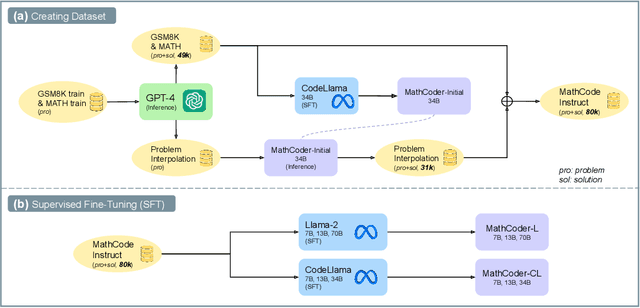
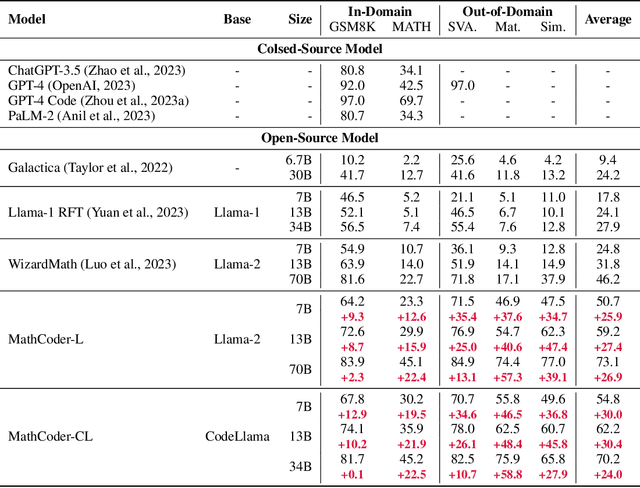
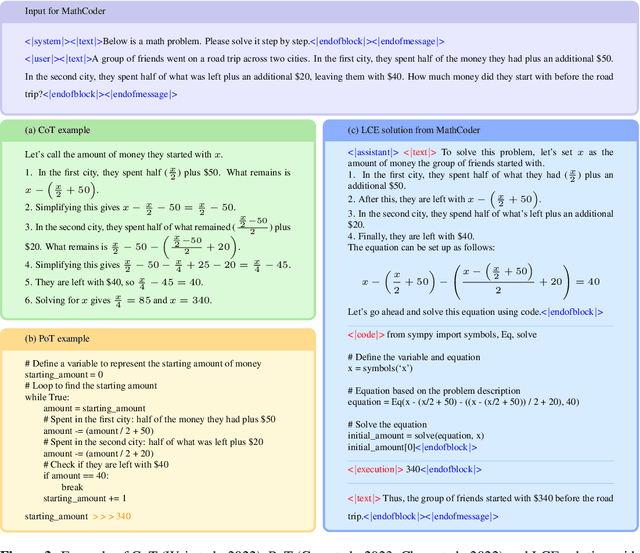
Abstract:The recently released GPT-4 Code Interpreter has demonstrated remarkable proficiency in solving challenging math problems, primarily attributed to its ability to seamlessly reason with natural language, generate code, execute code, and continue reasoning based on the execution output. In this paper, we present a method to fine-tune open-source language models, enabling them to use code for modeling and deriving math equations and, consequently, enhancing their mathematical reasoning abilities. We propose a method of generating novel and high-quality datasets with math problems and their code-based solutions, referred to as MathCodeInstruct. Each solution interleaves natural language, code, and execution results. We also introduce a customized supervised fine-tuning and inference approach. This approach yields the MathCoder models, a family of models capable of generating code-based solutions for solving challenging math problems. Impressively, the MathCoder models achieve state-of-the-art scores among open-source LLMs on the MATH (45.2%) and GSM8K (83.9%) datasets, substantially outperforming other open-source alternatives. Notably, the MathCoder model not only surpasses ChatGPT-3.5 and PaLM-2 on GSM8K and MATH but also outperforms GPT-4 on the competition-level MATH dataset. The dataset and models will be released at https://github.com/mathllm/MathCoder.
Solving Challenging Math Word Problems Using GPT-4 Code Interpreter with Code-based Self-Verification
Aug 15, 2023



Abstract:Recent progress in large language models (LLMs) like GPT-4 and PaLM-2 has brought significant advancements in addressing math reasoning problems. In particular, OpenAI's latest version of GPT-4, known as GPT-4 Code Interpreter, shows remarkable performance on challenging math datasets. In this paper, we explore the effect of code on enhancing LLMs' reasoning capability by introducing different constraints on the \textit{Code Usage Frequency} of GPT-4 Code Interpreter. We found that its success can be largely attributed to its powerful skills in generating and executing code, evaluating the output of code execution, and rectifying its solution when receiving unreasonable outputs. Based on this insight, we propose a novel and effective prompting method, explicit \uline{c}ode-based \uline{s}elf-\uline{v}erification~(CSV), to further boost the mathematical reasoning potential of GPT-4 Code Interpreter. This method employs a zero-shot prompt on GPT-4 Code Interpreter to encourage it to use code to self-verify its answers. In instances where the verification state registers as ``False'', the model shall automatically amend its solution, analogous to our approach of rectifying errors during a mathematics examination. Furthermore, we recognize that the states of the verification result indicate the confidence of a solution, which can improve the effectiveness of majority voting. With GPT-4 Code Interpreter and CSV, we achieve an impressive zero-shot accuracy on MATH dataset \textbf{(53.9\% $\to$ 84.3\%)}.
 Add to Chrome
Add to Chrome Add to Firefox
Add to Firefox Add to Edge
Add to Edge